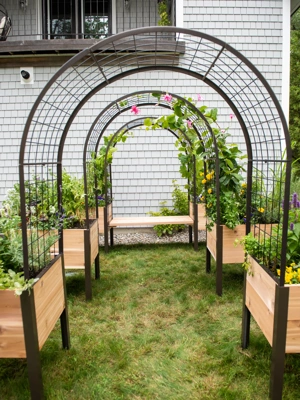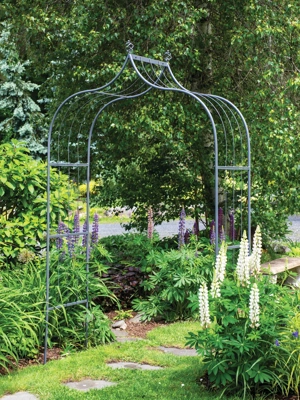How To Grow Birdhouse Gourds
These bulbous beauties are super easy to grow!
Also referred to as calabash or bottle gourd, birdhouse gourds (Lagenaria siceraria) are a type of tropical squash. Traditionally, early people used hollowed out birdhouse gourds for drinking and eating vessels — these days, their usage has expanded to include crafts such as birdhouses.
Growing Birdhouse Gourds
Like most squash, gourds, and other members of the Cucurbitaceae family, birdhouse gourds grow best in full sun and rich, well-drained soil chock full of compost.
In colder growing climates, these gourds are slow to start. However once the summer heat hits, they take off — birdhouse gourds will happily grow up and over just about anything: trellises, raised bed edges, neighboring plants, you name it. Because of this, birdhouse gourds benefit greatly from a heavy-duty structure or other support. Plant seeds or transplants near the base of a sturdy (fruits do get super heavy!) support and gently train vining tendrils on to the structure.
How to Plant Birdhouse Gourds

Birdhouse gourds require a long growing period — they can take upwards of 120 days to mature completely. If you live in a colder growing climate, start indoors under grow lights to make the most of your growing season.
Indoors: Sow 2 seeds per cell, then thin to down to just 1 plant after seedlings emerge. Use large, compostable pots, so plants can be transplanted outdoors without tender roots being disturbed. Wait to transplant outdoors until all risk of frost has passed, soil has warmed, and seedlings have at least 2 sets of true leaves on them.
Outdoors: Direct sow in late spring after the risk of frost has completely passed. Space plants so they are 2 feet apart, and plant 2 seeds per planting hole. These vining plants can easily ramble 10 feet or more — it may not look like it at first, but birdhouse gourds require plenty of growing room.

When to Harvest Birdhouse Gourds

For drying and crafting, fruits must be completely mature prior to harvest. Let fruits remain on the vine until the first freeze — even if the foliage and stems wither, light frost will not harm the fruits.
Use a sharp knife to cut the stem 1-2 inches above the gourd itself. Store in a dry, well-ventilated area until the fruit is completely dry, which may take 1-3 months depending on the size of the fruit. Surface mold can be wiped off the exterior of the gourd, but if fruits turn mushy, toss in the compost. Gourds are completely dry when:
- They are lightweight
- The color has faded from pale green to beige or ivory
- You can hear seeds rattling around when they're shaken
Here comes the question — are these gourds edible? Well, sure, birdhouse gourds are technically edible, however they have fibrous flesh that is bitter in flavor. If you choose to eat gourds, harvest fruits when they are immature and still green.
Last updated: 11/15/2023
Print this Article:
Related items
Get the Dirt
Stay up to date on new articles and advice. Please fill out the information below.










